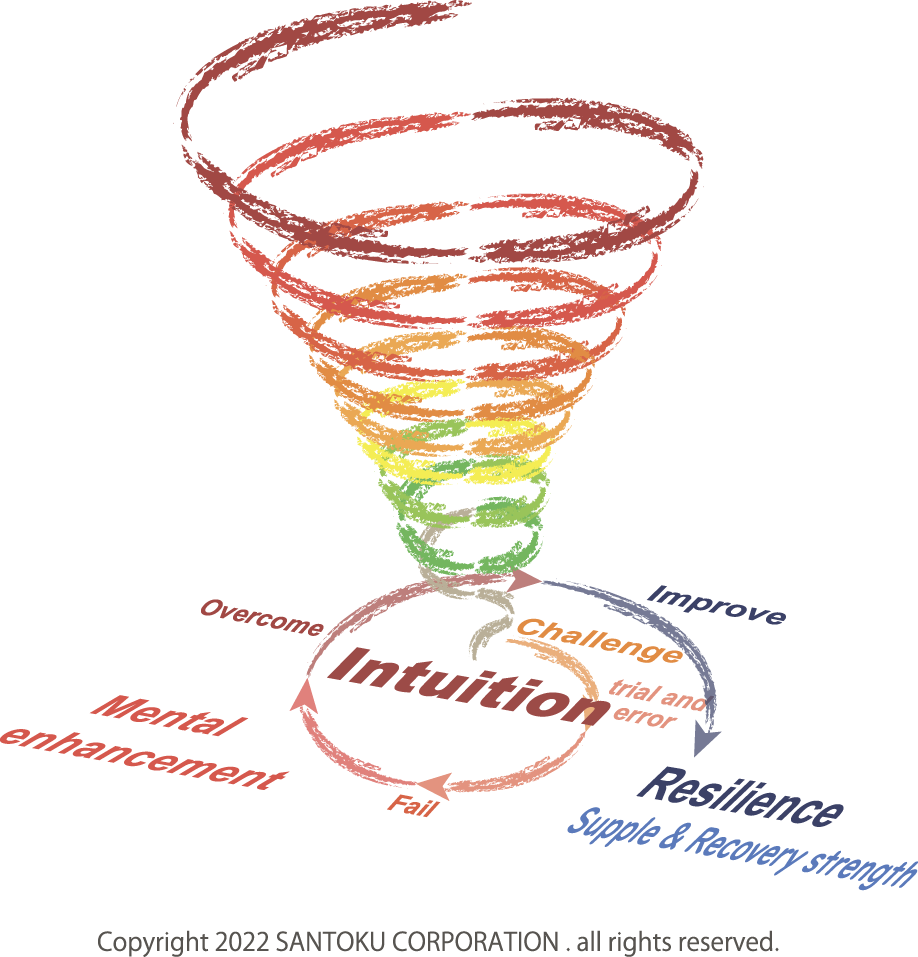When we think of disaster resilience, we think of “flexible strength” and “ability to recover.” In short, resilience is resilience, but it is not an easy task to tenaciously deal with disasters and maintain flexibility. In order to achieve this, it is necessary to have the experience of challenging things toward the goal, searching for solutions through repeated trial and error, and finding solutions. How can I actually train my mind? Spiritual training consists of the will to take on new challenges, the strong desire to face and solve difficult problems, and the spirit of continuing to learn through trial and error, believing that even if you fail repeatedly, you will be able to solve them without giving up. For that reason, I have repeatedly experienced the process of finding a solution by trying various methods, and sometimes logically while using my imagination, sometimes giving up and changing the direction of searching, and repeatedly experiencing the process of deriving the correct answer. You can train your mind. Through repeated challenges and overcomings, you will learn patience, learn how to overcome obstacles, and develop your intuition. In the process of trial and error, I believe that we can “learn flexibly and be strong and see the ability to recover” by facing the essence, believing that we can definitely solve it, and searching for solutions while patiently and logically imagining. . The method described here is just one method. To achieve true resilience, we must continue to look for ways to increase resilience. It is not possible to simply explain how to increase resilience, and it seems necessary to continue to search for realization methods through repeated trial and error. It seems that the road to continue searching for safety and security while living with the earth is still ahead.

Here we summarize resilience.
strength of mind not to give up
mental strength to do one is best
Ability to persevere and discover possibilities
Ability to think calmly without panicking
Power to barely slip through
The power to put life first and cut it down at times
When in doubt, decide immediately and do not look back
The characteristics of resilience are:
Continuous learning Feedback loops internalize experience
Rapid recovery Establishing functions, reorganizing, avoiding disruption
Failures with limits It takes experience to get the hang of it.
Flexibility: Ability to adapt to change and evolution in times of disaster and alternative strategies
Reserve capacity Backup, preparation of alternatives
Psychological resilience should consider:
self-confidence self-esteem
Optimistic thinking, to avoid being overwhelmed by extreme tension
Social Skills Problem-Solving Ability, Interpersonal Ability
Social support Finally, you need the help of people around you
Feeling “alive” Hot meals, hot baths
Resilience is assessed by:
Latitude Amount that can be changed without losing ability
Resistance
Precariousness Indicates the threshold at which it becomes impossible to cross the line.